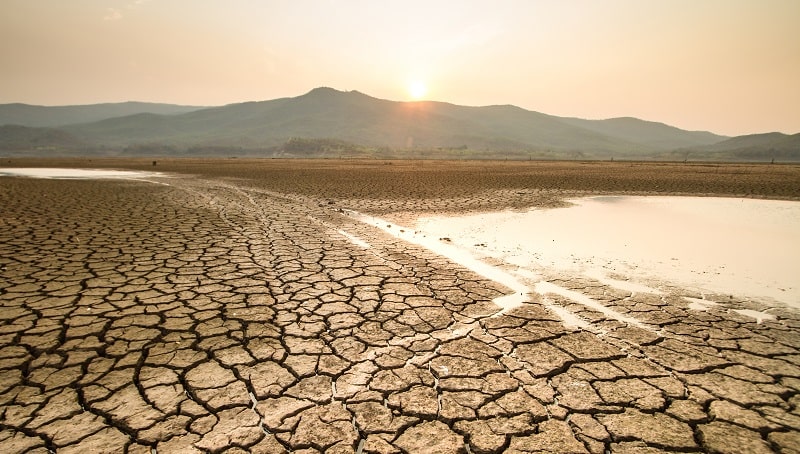You know that the earth’s atmosphere is warming, and you have also likely noticed that storms now dump more precipitation than ever on cities.
As it turns out, the two issues are related.
As the earth’s atmosphere warms, it holds greater amounts of moisture. With more moisture hanging in the atmosphere, global rainfall will grow annually according to the temperature. For every degree centigrade the atmosphere warms, it will hold roughly seven percent more water vapor.
Why is it so important? For every incremental degree of warming, the total volume of precipitation will grow between one to two percent.
Scientists anticipate that rainfall will be one of the most critical factors in assessing climate change. Although changes in precipitation are not easy to predict as temperature, there are ways for scientists to evaluate rainfall that provide more insight into the future of the planet.
What does increased heavy rain mean for the planet? Here’s what wetter weather could do to populations around the globe including where you live.
How Global Warming Changes In The World’s Water Cycles
Precipitation, which becomes rain, snow, hail, and sleet, moves through a cycle of evaporation and precipitation. The water that feeds the precipitation in the atmosphere comes from multiple sources. Approximately 60 percent of the precipitation that rains down comes from water vapor absorbed from the ocean. The other 40 percent is “recycled.”
“Recycled” water vapor gets picked up elsewhere and moves across the globe. For example, water from rain and snow in Eurasia becomes precipitation in China and far east Asia.
Because the water vapor moves in a cycle, the increased load in the atmosphere creates significant changes for people and landscapes around the world. When the atmosphere holds more moisture, it dumps more moisture. The risk of floods grows substantially because the intensity of the downpour grows.
Increased Heavy Rain Makes Predictions More Difficult
At present, meteorological forecasts operate in a rather sophisticated fashion. The combination of a century of data, satellites, and radar means meaningful storms are predictable. Predictability allows us to plan for safety.
Changes in the earth’s weather patterns caused by fluctuations in the water cycle make those predictions difficult.
Climatologists believe that a warmer climate means heavy rainfall. They also suggest that the rain will not come incrementally. It will instead arrive in fewer weather events as a result of higher intensity.
The result isn’t merely a wetter climate. It could result in longer droughts or dry spells, and more and higher risks of severe flooding. It also means people and organizations have less time to prepare for both, which prevents the critical adjustments that minimize the damage of these periods.
Heavy Rain: What We Know Now
Some believe that changes in rainfall as a result of global warming may already be in occurrence. However, in most cases, researchers have yet to confidently distinguish regional rainfall patterns from natural variations in rainfall year-to-year and decade-to-decade.
Tying these events to the warming of the atmosphere continues to evolve, but progress continues steadily.
For example, in one study of the United Kingdom, data provided evidence that climate change began raising the odds of severe flooding starting towards the end of the year 2000. The same study suggests that discernible changes in heavy rainfall may occur in only a few short years: the 2020s.
Improvements In Client Models May Be
On The Horizon
Although scientists worry about the predictability of increased rainfall, significant changes in climate models could help rectify the problem.
As the access to detailed models and improved satellites improves, we see new possibilities for both understandings how water cycles changed and predicting those changes to grow. The case of Hurricane Florence is one of these events when scientists predicted the potential destruction ahead of time.
In September 2022, Hurricane Florence made landfall on the eastern seaboard of the United States. Meteorologists predicted that the rainfall would be at least 50 percent worse and the size of the hurricane would also be 50 miles wider as a result of global warming.
Scientists hope to be able to replicate these methods in future storms, but only time will tell.
The Threats Posed By Unpredictable, Heavy Rain
Changes in the water cycle upend prediction patterns, which lead to greater threats. Flooding is the most obvious and dangerous threat posed by heavy, unpredictable precipitation.
Reading the news, you might recognize hurricanes as one of the hallmarks of these threats. Hurricane Harvey dumped record rainfall on Houston in August 2022.
The 48 inches that fell during the event shattered the record for the most rain. It also showed that while hurricanes and tropical cyclones present challenges like wind damage and coastal flooding, heavy precipitation could be the biggest challenge.
Hurricanes aren’t the only challenge. Individual rainfall events also present dangers. For example, Nashville suffered over $1 billion in losses when it received 20 inches of rain over three days back in 2010.
In September 2013, the city of Boulder, CO received 17 inches of rain in only four days. In a regular year, the city would only gain so much rain across 365 days. The resulting flooding ravaged the city and local crops.
Parts of North Carolina recorded 30 inches of rain and reset the state’s record for the most rainfall in one event.
These are just a few of the most recent examples, and the destruction means we need to take a closer look at the potential for heavy rainfall to damage our communities.
What Could Heavy Rain Do To The Planet?
We already touched on some of the risks of heavy rainfall like the higher chances of flooding, but to understand why more rain is a problem, we need to understand what that means.
The primary effects of heavy rainfall include:
- Flooding
- Storm damage
- Loss of crops and livestock
- Landslides
- Shoreline erosion
FLOODING
Flooding is the most apparent issue when torrential and heavy rains hit an area. The effect of flooding is particularly problematic in urban areas in part because the public tends to underestimate the consequences of rising waters compared to problems like hail or high winds.
Rainwater alone isn’t the problem. The water hits infrastructure like sewers cause additional flooding and further damage to buildings.
Storm Damage
Engineers and urban planners continue to make buildings and cities safer, which contributes to the low death toll insignificant events in cities. Storm damage costs, however, continue to rise and more torrential rains play a serious role.
Wind damage followed by heavier than average rains contributes to more significant amounts of storm damage and ultimately costs. What is more, severe events continue to happen closer together and with equal amounts of power. Another hurricane may follow thirty inches of rain, which compounds storm damage.
We can count on seeing damage costs run into the hundreds of millions or even billions as the weather continues to get worse.
Loss of Crops And Livestock
The focus tends to land in cities where a higher concentration of people and higher damage totals exist.
However, heavy rains also have the potential to hurt crops. When fields flood, the water-logged soil misses out on oxygen, which changes plant respiration to something similar to fermentation, reducing energy production by up to 95 percent. The result is plant death and sometimes total crop failure.
The impact depends on the stage of the plant’s life cycle and soil characteristics. In the right conditions, some plants may recover with the rain hindering plant development. In others, the wet soil may cause disease development, small plants, or the loss of the entire plant.
Ultimately, heavy rains don’t just impact plants on the day of the event. Waterlogging continues to hurt plants for days or weeks after the rain, and additional moisture compounds the issue.
Landslides
Rainfall-induced landslides begin to develop over hours or even days before the event. When a slope becomes too saturated by rainfall, it may cause the soil to slip and send debris flowing. Not all heavy rain events cause landslides, but both more precipitation, and higher frequency will likely contribute to more landslides.
The result may be devastation that wipes out homes, infrastructure, or even whole towns or villages.
Scientists can now connect heavy rain with landslides via satellite and map landslide susceptibility. NASA put together a database for governments to download maps that display rainfall and accumulation to predict landslides better. Despite this, it’s not possible to stop landslides. The best hope is to minimize the loss of human life.
Shoreline Erosion
Shoreline erosion is another massive problem because it is caused both by rising sea levels, heavy rains, and storm surges. Shoreline erosion puts lives and infrastructure at risk as well as causes rotational landslides.
Climate Change Impacts Our Weather
Do you look to the forecast to decide what to wear, where to go, or how to adjust your heating and cooling? Climate change could disrupt estimates of precipitation, which impact everyone’s daily lives and presents a clear and present danger to those living on coastlines or near places with a higher risk of landslides.
The impact of increased heavy rain will do more than cause people to stock up on umbrellas. It could upend infrastructure, food production, and budgets as the world cope with the damage.



